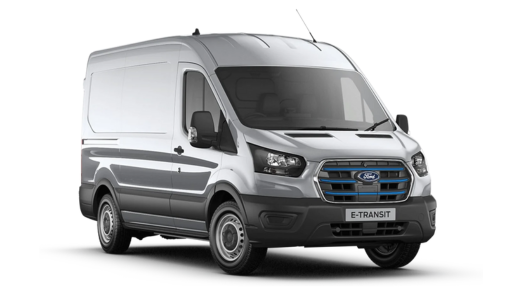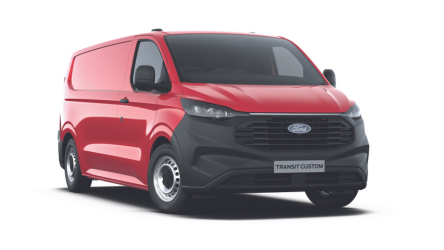Electric Vans
I'm looking for
The All-Electric E-Transit
Purpose-built to be as tough, capable and versatile as ever. Now with zero emissions while driving too. The E-Transit is the latest addition to Ford’s growing family of electrified vehicles, and the electric van is ushering in a new era for the iconic Transit van.
Transit Custom PHEV (Plug-in Hybrid)
The first Plug-in Hybrid in its segment, Transit Custom PHEV is capable of electric-only driving and zero emissions to a targeted range of 56 km.
All-Electric E-Transit Custom
The All-Electric E-Transit Custom is built from the ground up with next-gen connectivity and productivity at its heart. The All-Electric E-Transit Custom delivers the same legendary capability, but now as an all-electric van for more efficiency++, and zeroemission while driving.
Tourneo Custom
With seating for up to nine occupants, the Ford Tourneo Custom delivers a practical and versatile interior space, with the exceptional comfort levels of a premium passenger vehicle
Transit MHEV (Mild Hybrid)
To help maximise efficiency, the Transit van is now available as a Mild Hybrid. A small battery-driven electric motor works with the conventional ebgine to help reduce fuel consumption increasing the efficiency of your vehicle when demand for power is low.
Transit Chassis Cab MHEV (Mild Hybrid)
Flat-beds, tippers, refrigerated vans, or almost anything else… There’s a reason the Transit Chassis Cab is the choice of vehicle for a van conversion. Now available as a Mild Hybrid
Call Our Electric And Hybrid Specialists Today On 0345 415 0415
Which Electric Vehicle Is Best For You?
If you’re considering making the switch to an electrified vehicle, then it’s important you understand the differences between them.
Click on the icons below to get more information on Mild Hybrid, Hybrid, Plug-in Hybrid and All-Electric Vehicles.

Mild Hybrid
In the case of a mild hybrid, the conventional petrol engine is assisted by a battery driven electric motor. Although the electric battery cannot power the car itself, the assistance it provides reduces emissions.

Hybrid
A Hybrid EV utilises two sources of power – conventional and electric. The vehicle will automatically switch between the two depending on the speed of travel. When crawling through heavy city traffic, for example, a HEV will switch to electric power and will not use the conventional engine at all.

Plug-In Hybrid
A Plug-In Hybrid is similar to a HEV in that it uses both conventional and electric power sources, but the battery is much larger and as a result the vehicle is able to travel further distances using solely electric power. They need to be plugged into the mains in order to recharge the electric battery.

All-Electric
Drive purely by electricity, an All-Electric Vehicle needs recharging before you can go anywhere. Although ranges are increasing (some Ford vehicles will take you 310 miles on a single charge), you’ll need to plan your recharging points before setting off on a long journey as most existing electric cars have a range of around 130 miles.
Types Of Ford Electric Vehicles – What’s The Difference?
With so many electric vehicles coming onto the market, though, it can be hard to know exactly which one is most suited to your needs.
Here we break down the differences between the types of Ford electric vehicles, looking at things like distance, cost and charging time to help you find the best electric vehicle for you.
The Benefits Of Electric Vehicle Ownership
It’s Cheaper
Reduced emissions means lower road tax, and by shunning traditional fuels you’ll be cutting down on petrol costs. Financial incentives from the government are also available to encourage you to switch to electric.
Smoother Experience
Less engine noise and fewer moving parts results in a calmer driving experience.
Go The Distance
The distance you can travel using electric vehicle batteries is increasing all the time, and with thousands of charging points across Europe there’s no need for any range anxiety with a brand new EV.
How Does Charging An Electric Vehicle Work?
There are plenty of charging options with a Ford electric vehicle. Watch this video to find out more.







